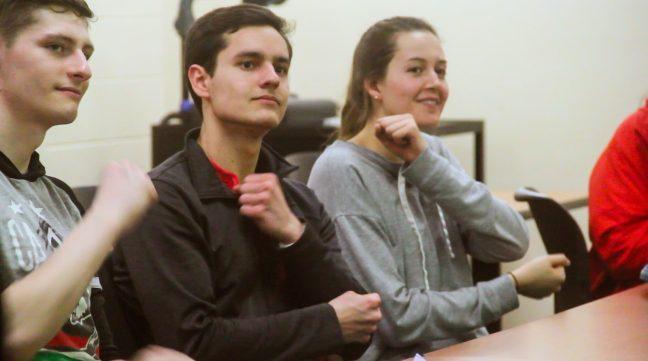The University of Wisconsin will be launching its first American Sign Language program in the summer of 2023, according to the UW’s Language Sciences website.
The eight-week course — Linguistics 351: American Sign Language 1 — will act as an introduction to the basics of ASL and Deaf culture and will introduce students to American Sign Language and the fundamentals of Deaf cultural practices, according to the UW Language Sciences website. The course will also count toward language requirements.
According to the website, the class will also focus on important figures, events and histories of the Deaf community in the United States, as well as issues of language access and inclusion. For those who are unavailable to take the course this summer, it will also be offered for the Fall 2023 semester, according to the UW Language Sciences website.
This new program was driven by a campaign by former Associated Students of Madison intern Melina Nguyen. Nguyen said part of her internship included creating a grassroots campaign that focused on an issue that would benefit students across campus.
Nguyen said she decided to pursue creating an American Sign Language curriculum because while she is not deaf or hard of hearing herself, she took ASL in high school and felt that the benefits of it were something UW students should have the opportunity to experience as well.
Nguyen talked to students who were excited about the idea of taking ASL or thinking about potentially pursuing ASL as their language requirement but did not have classes available to do so. To make an ASL program a reality, Nguyen said she connected with professors who were already working towards a similar goal and collaborated with faculty from UW-Milwaukee’s already well-developed ASL program.
The importance of this program is not just about allowing students the opportunity to learn about ASL and Deaf culture, but also about creating a more inclusive community for those who are ASL signing, deaf or hard of hearing on campus, Nguyen said.
“Deaf culture is one of those things that feels really hidden from certain people because it feels so different from the way they live their day-to-day lives,” Nguyen said.
This unawareness and the lack of resources to learn about ASL and Deaf culture at UW has resulted in a lack of community for those individuals on campus, Nguyen said. This new program is paving the way for more inclusion in terms of ASL and Deafness.
Having an understanding of ASL and Deaf culture will create a much more inclusive environment at UW, but it also has uses that will be beneficial long after students leave UW, Nguyen said. For example, she shared her past work experiences where she was able to aid ASL signing customers more efficiently.
Being more broadly equipped with other modes of communication in career fields, communicating with others from far distances and even underwater communication are all advantages of being knowledgeable in ASL, according to Nguyen.
There has been a recent movement of parents teaching their young children baby signs to communicate better before the child can develop words, according to Nguyen. By understanding even minimal ASL, communication will be more effective for and between all people, Nguyen said.
ASL programs at other schools, such as the University of Minnesota, have proved to be a success for students, according to UMN sophomore Aubrey Erdmann. She weighed into the conversation of UW’s first ASL program with her current experience taking a similar class. She decided to take an introductory class, similar to what is being offered at UW this summer, after working restaurant jobs and not knowing how to interact with Deaf and ASL signing customers.
When discussing the details of the course, Erdmann described a space where the class is located as an “ASL Zone,” meaning students cannot speak when in the space and can only sign to communicate. This is out of respect to the community but also aids in becoming more comfortable signing outside of class, Erdmann said. Erdmann expressed her surprise with how quickly she picked up signing and understanding what people mean when they sign to her, and she encourages others to take the opportunity to learn as well.
“Don’t be intimidated, and give it a shot,” Erdmann said. “The community itself is very patient and welcoming.”
ASL programs provide a variety of benefits and inclusivity, according to Nguyen and Erdmann. For UW, the program is creating new opportunities and options for students to learn the language, broaden their perspective and expand their skill sets, Nguyen said.
Nguyen said she has hope for the curriculum to eventually develop into a certificate program with more classes if current offerings receive enough interest.


